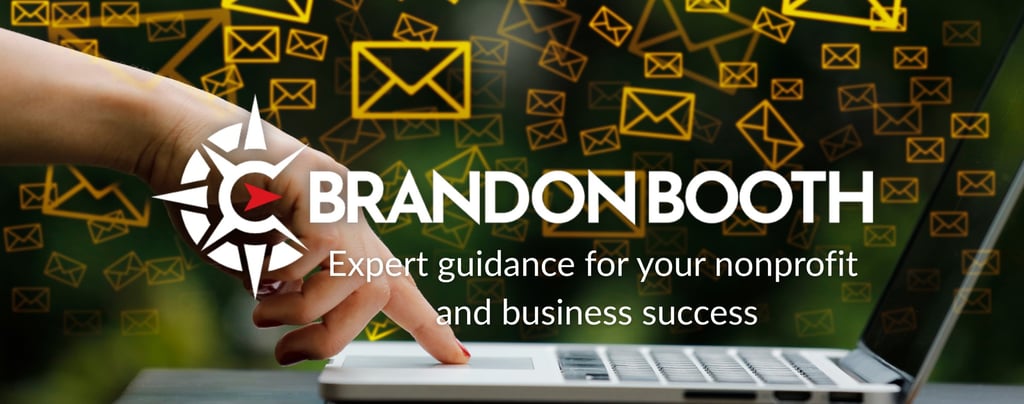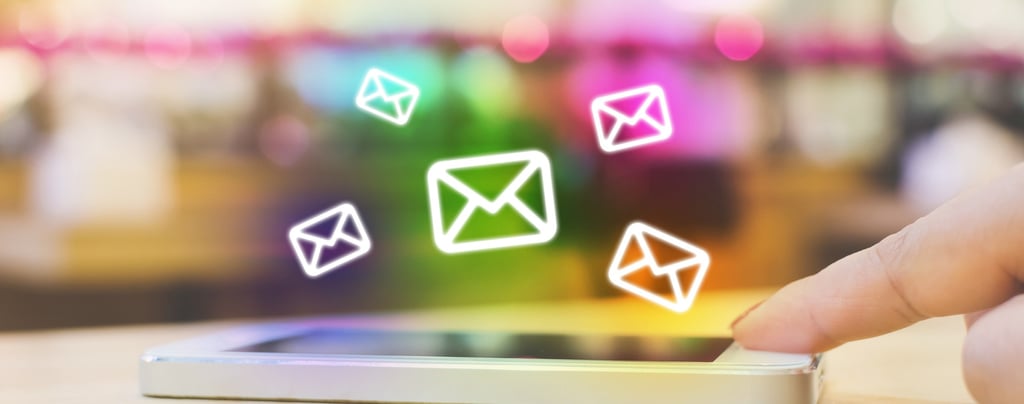How to create an email list that people actually open!
Brandon Booth
5/26/20255 min read
Never miss a post! Signup for my email updates today and get expert guidance delivered directly to your inbox!
You've heard it a thousand times: "Build an email list!" But what good is a list of 1000 subscribers if only 12 people actually open your emails? You're not running a digital graveyard—you're trying to build genuine connections that fuel your mission.
The frustrating reality is that most nonprofit emails end up ignored, deleted, or marked as spam. Your passionate updates about changing lives get buried under promotional clutter, and your carefully crafted appeals for support never see the light of day.
But what if your emails could cut through the noise? What if supporters actually looked forward to hearing from you? What if your inbox became a bridge that strengthens relationships rather than a burden that weakens them?
The secret isn't more emails—it's better emails. And I'm going to show you how to create an email list that people genuinely want to be part of.
1. Value = Opens: Make It About Them, Not You
The biggest mistake nonprofits make is treating their email list like a megaphone for announcements. "We did this!" "We need that!" "Come to our event!" This approach transforms your emails into digital bulletin boards that people quickly learn to ignore.
Instead, flip the script. Your emails should serve your readers first, your organization second.
Ask yourself: What does your audience actually need? If you serve struggling families, maybe they need practical budgeting tips or local resource guides. If you work with at-risk youth, perhaps parents need strategies for difficult conversations. If you're a church, your congregation might benefit from weekly encouragement that helps them navigate real-life challenges.
How do you find out what your audience actually needs? Ask them! Pick up the phone and talk to your most important donors, a few key stakeholders, a couple of friendly clients.
Then remember: people support vision, not just need. Instead of only sharing what you lack, paint a picture of the transformation you're creating. Show them the world you're building together, and invite them to be part of that story.
Pro tip: Follow the 80/20 rule. Eighty percent of your email content should provide value to your readers—encouragement, resources, insights, inspiration. Only twenty percent should be direct asks or organizational updates.
2. Keep It Useful and SHORT
Your supporters are busy people juggling work, family, and countless other commitments. The average person spends just 9 seconds reading an email before deciding whether to continue or delete it.
This means your most important content must appear "above the fold"—visible without scrolling. Lead with value, not pleasantries.
You might structure your emails like this:
Opening line: Jump straight into something useful or intriguing
Main content: One focused topic, not three different updates
Clear action: What do you want them to do next?
Brief sign-off: Keep it personal but concise
Aim for emails that take 2-3 minutes to read maximum. If you have more to say, link to a blog post or create a series rather than cramming everything into one overwhelming message.




3. Mobile-First Design (This Is Critical!)
Most folks use their phone to read your emails. Yet most email design tools default to desktop views, leading to emails that look great on your computer but terrible on phones.
Mobile-first essentials:
Single column layout: Forget fancy multi-column designs
Large, tappable buttons: Make calls-to-action easy to tap with thumbs
Readable font sizes: 16px minimum for body text
Compressed images: Fast loading is crucial for mobile users
Short subject lines: Aim for 30 characters or less to avoid truncation
Before sending any email, preview it on your phone. Better yet, send test emails to yourself and check them on multiple devices. If it's hard to read or navigate on mobile, your audience will delete it instantly.
4. Timing and Frequency: Finding Your Rhythm
When should you send? The "best" time varies by audience. There really is no right answer, but I’ve seen research that suggests Tuesday through Thursday between 10 AM and 2 PM tend to perform well for nonprofits. However, your specific audience might be different. Test different days and times, then stick with what works for your community.
How often should you send? There's no magic number, but consistency trumps frequency every time. Whether you send weekly, bi-weekly, or monthly, pick a schedule you can actually maintain. It's better to send one quality email per month consistently than to send poorly crafted weekly emails sporadically.
Start conservatively—perhaps bi-weekly—and increase frequency only if you can maintain quality and have genuinely valuable content to share.
5. Stay Out of the Spam Folder
Nothing kills email engagement faster than landing in spam folders. Here are the essential practices to keep your emails in the primary inbox:
Authentication basics:
Set up SPF, DKIM, and DMARC records (ask your email provider for help with this)
Use a consistent "from" name and email address
Include your physical address in every email.
Do not purchase email lists! Only email people from whom you receive permission.
Content considerations:
Avoid spam trigger words like "FREE!!!" or "ACT NOW!"
Don't use excessive capitalization or exclamation points
Include a clear unsubscribe link (hiding it actually hurts deliverability)
Maintain a healthy text-to-image ratio—too many images trigger spam filters
For deeper technical guidance, check out these resources from Saleshandy on how to avoid Gmail’s promotion tab or Bloomerang’s guide on how to avoid the spam folder.
Getting Started: Your First Steps
Ready to build an email list that actually engages your community? Start with these foundational steps:
Define your value proposition: What specific benefit will subscribers receive? Write this down in one clear sentence.
Choose your platform: Start with user-friendly options like Substack (free and simple), SendFox, or Mailercloud. (Pro Tip: Hostinger is releasing a built-in subscriber email platform soon! You can combine your website and email list on one ultra-affordable platform!)
Create your signup incentive: Offer something valuable in exchange for email addresses—a helpful resource, exclusive content, or early access to events.
Plan your first campaign: Outline 4-5 email topics that provide genuine value to your audience.
Set up your mobile preview: Always check how your emails look on phones before sending.
Your Email List Success Partner
Building an email list that people actually open isn't just about following best practices—it's about understanding your unique community and crafting messages that truly serve them. The technical setup, content strategy, and ongoing optimization can feel overwhelming when you're already managing a full ministry or nonprofit workload.
That's where I come in. I specialize in helping ministry leaders and nonprofit founders create email strategies that build genuine relationships and drive real engagement. From choosing the right platform to crafting compelling content that reflects your mission, I can guide you through every step of building an email list that actually works.
Ready to transform your email communication from ignored announcements into anticipated connections? Schedule a free consultation with me today. Let's create an email strategy that serves your supporters and advances your mission—without the overwhelm.
Your community is waiting to hear from you. Let's make sure they actually do!
© Brandon Booth, 2025
Expert guidance for nonprofits and ministries.
Brandon Booth



